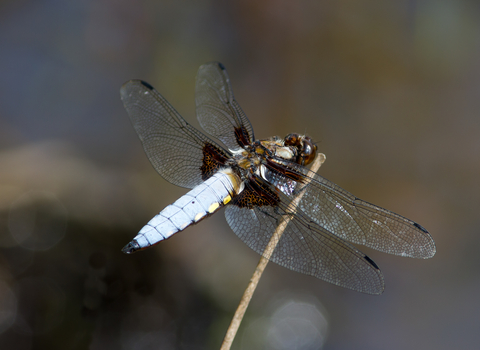
©Mike Snelle
Broad-bodied chaser
The Broad-bodied chaser is a common dragonfly that can be seen in summer around ponds and lakes, and even in gardens. It lives up to its name: its flattened body gives it a fat, broad look.
Scientific name
Libellula depressaWhen to see
May to AugustSpecies information
Category
Statistics
Length: 3.9-4.8cmCommon.
